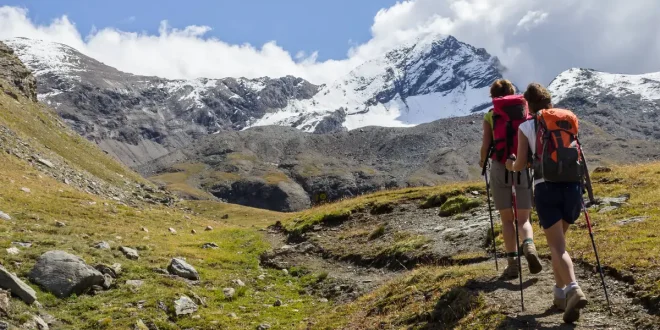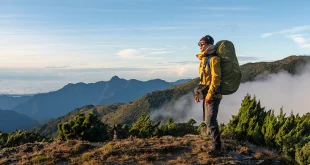As someone who loves exploring the outdoors, I can tell you that hiking is one of the best ways to enjoy nature, get some fresh air, and disconnect from daily life. However, it's essential to recognize that hiking comes with its own set of dangers. Whether you're an experienced hiker or new to the trail, following the best hiking safety tips is critical for ensuring your adventure is both safe and enjoyable. In this article, I’ll share the hiking safety tips that I personally rely on to help me stay safe and prepared on the trail.
Planning Your Hike: The First Step to Safety
One of the most important hiking safety tips I can give you is to plan ahead. Knowing your trail before setting out is absolutely vital, regardless of whether it’s a short walk or a long trek. I’ve learned that thorough preparation can make or break a hike. The first step is always to research the trail, understand the terrain, check the difficulty level, and learn about any possible risks. There’s nothing worse than being caught off guard by unexpected conditions, so taking the time to plan and prepare is always worth it.
Check the Weather Forecast
A key part of planning ahead is checking the weather forecast. Weather conditions can change dramatically, especially in more mountainous or remote areas. I make it a habit to check the forecast the day before and the morning of my hike. If there’s a storm, high winds, or extreme temperatures expected, I won’t hesitate to reschedule. I’ve learned that no hike is worth risking your safety just because you didn’t check the weather.
Let Someone Know Your Itinerary
Always, always tell someone where you’re going. Before I leave for any hike, I make sure a friend or family member knows the exact trail I’m on, how long I expect to be gone, and my estimated return time. In case anything goes wrong, I’ve learned that having someone aware of your whereabouts can be a game changer. Even if I’m hiking solo, this simple step has proven to be crucial.
Packing Right: Essential Gear for Every Hike
When it comes to hiking safety tips, having the right gear is a must. Over the years, I’ve learned that bringing the right equipment can make a huge difference in how enjoyable and safe your hike is. Here's a breakdown of the gear I make sure to pack for every hike:
Footwear and Clothing
The first thing I think about when packing is footwear. A good pair of hiking boots is absolutely essential. After a few painful hikes with blisters or unstable footing, I now make sure to wear boots that provide both support and traction. I opt for boots that are waterproof when I’m hiking in areas that might get muddy or wet. Along with the right shoes, wearing moisture-wicking clothing is key. I prefer lightweight, breathable layers that help me regulate my body temperature, regardless of the weather.
Hydration and Snacks
Another aspect of hiking safety tips that I can’t stress enough is staying hydrated. I’ve had hikes cut short because I didn’t drink enough water or brought inadequate snacks. I always pack a water reservoir or multiple bottles to make sure I have enough for the entire hike. And, I never forget to bring high-energy snacks like trail mix, nuts, or energy bars. These snacks are great for keeping my energy up without weighing me down. Staying hydrated and energized is essential, especially on longer hikes.
Emergency Gear: Be Prepared for the Unexpected
No matter how well I prepare, I always carry an emergency kit. You never know when something unexpected might happen, and I’ve learned the hard way that having a few key items can make all the difference. My emergency kit includes a small first aid kit, a flashlight, a multi-tool, a whistle, and matches or a fire starter. These items are lightweight but incredibly useful if something goes wrong on the trail.
Stay Alert: Always Be Aware of Your Environment
One of the most important hiking safety tips I’ve learned over the years is to stay alert to your surroundings. It’s easy to get lost in the beauty of nature, but keeping your focus on the trail and your environment is vital for staying safe.
Watch for Trail Markers and Signs
Whenever I’m on a trail, I constantly look for trail markers and signs to ensure I’m on the right path. I’ve had moments where I got distracted, only to realize I had strayed from the trail. Staying vigilant and checking for markers frequently helps avoid getting lost. If you’re unsure about your route, I suggest pulling out a map or GPS device to confirm your location.
Know the Local Wildlife
Another aspect of hiking safety tips I’ve learned is to be mindful of wildlife. If you’re hiking in an area where wild animals are common, like bears, snakes, or mountain lions, it’s important to know how to behave. I’ve seen wildlife during my hikes, and I always respect their space. I make noise as I walk to avoid surprising animals, and I keep all my food secured in a bear-proof container. If you encounter an animal, it’s essential to stay calm, avoid eye contact, and back away slowly. These precautions can help prevent dangerous encounters.
Go at Your Own Pace: Don’t Overexert Yourself
It’s easy to get caught up in the excitement of reaching the summit, but one of the best hiking safety tips I can share is to always hike at a pace that feels comfortable to you. Overexertion can lead to fatigue, dehydration, and injury.
Take Regular Breaks
During long hikes, I make sure to stop regularly to rest, drink water, and eat a snack. These breaks help me recharge and avoid exhaustion. I’ve learned that taking these small pauses can keep me energized and ready for the next stretch of trail. If I’m feeling too tired or sluggish, I know it’s time to take a longer break or reconsider the hike altogether.
Know When to Turn Back
One of the most difficult hiking safety tips to follow is knowing when to turn back. It’s not always easy to accept that you might not finish your hike, but I’ve had to turn around a few times due to bad weather, injury, or simply being too tired. Recognizing your limits is vital for staying safe. I’ve learned that it’s better to cut a hike short than to push on and risk making a dangerous mistake.
Navigating the Trail: Stay on Track
Staying on the designated trail is another key hiking safety tip I always follow. While it can be tempting to explore off the beaten path, straying from the trail can lead to dangerous situations. I’ve been in areas where I lost track of the trail and ended up disoriented. That’s why I make sure to always follow trail markers, carry a map, and use a GPS device when hiking in unfamiliar areas.
Conclusion
By following these hiking safety tips, I’ve been able to enjoy many memorable and safe hikes. The most important lesson I’ve learned is that preparation, awareness, and knowing when to stop are the keys to a safe and enjoyable hiking experience. Whether it’s planning your route, packing the right gear, staying hydrated, or simply being cautious of wildlife, these tips will help ensure that you’re always ready for your next outdoor adventure. So, before you set out on your hike, remember to stay safe, stay alert, and most importantly—enjoy the journey.
 Best Hiking Gear Hike More, Worry Less
Best Hiking Gear Hike More, Worry Less

